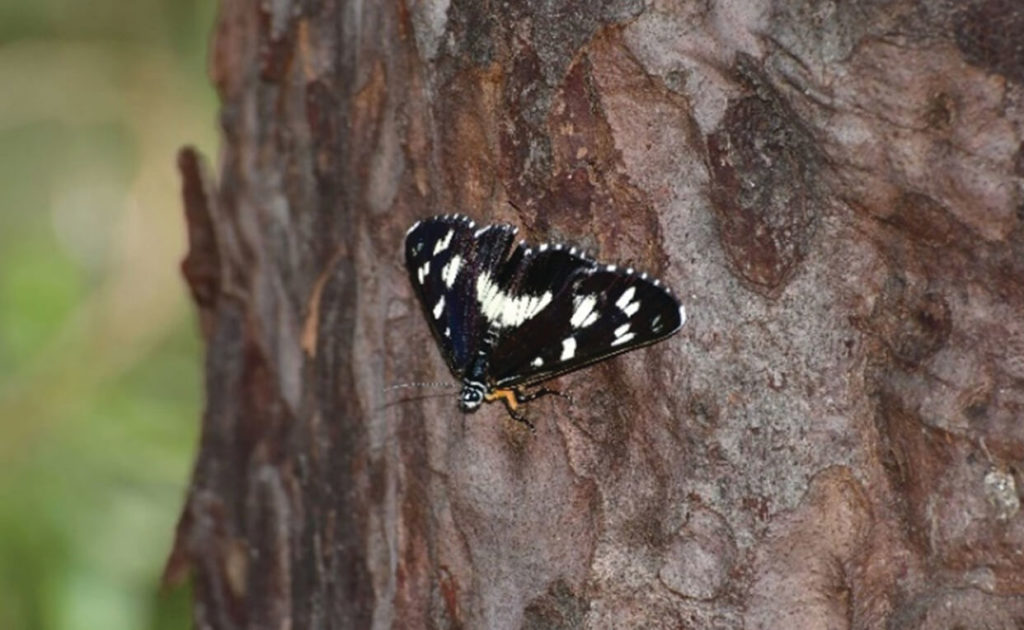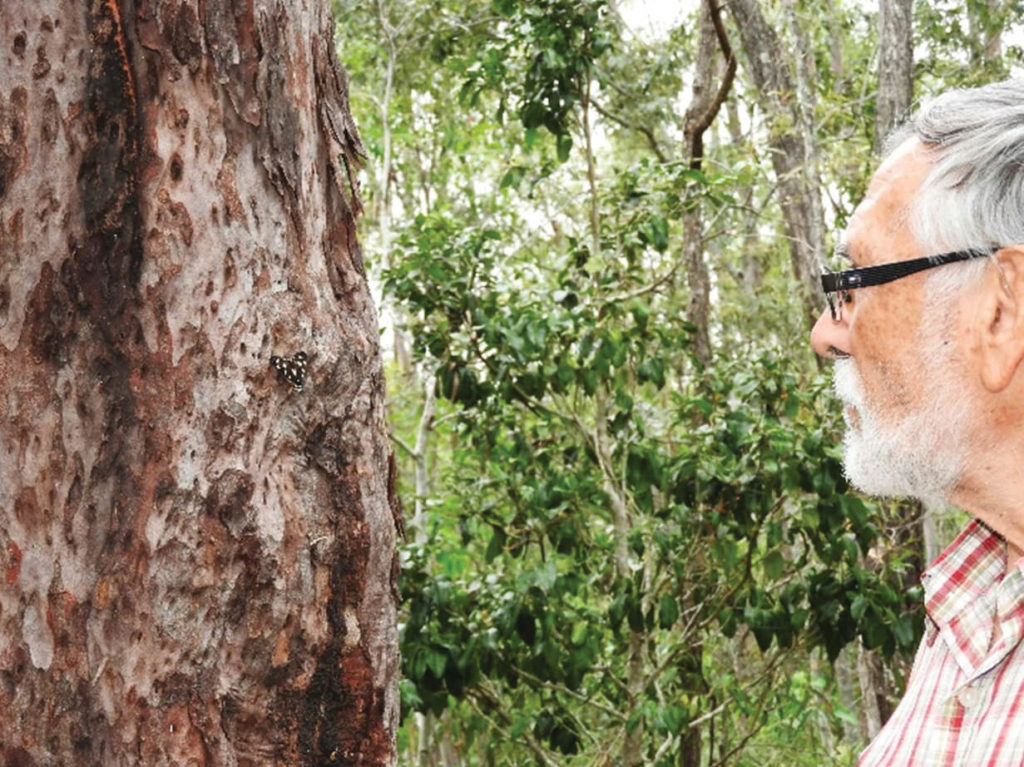It is only when a Donovan’s Day Moth settles in a downward position on a tree trunk, with its tail and wing tip resting on the tree and head and thorax raised, that you are able to see the pattern and the colours of the body from side on.
The autumn of 2021 found us in the now-familiar humdrum of social isolation. During this time I was fortunate to have some special visitors grace our property. We had up to five Donovan’s Day Moths (Cruria donowani) patrolling our bitumen driveway for over a fortnight. As the name suggests, most species of day moth fly during the day rather than at night. Adult moths are distinctively marked and brightly coloured, usually in orange, black and white.

I decided to observe, photograph, and document the behaviour of our colourful visitors. They flew and patrolled constantly just like some butterflies do, but regularly returned to rest on the tree trunks, favouring the trunk of a large Spotted Gum. They appear to prefer to perch between chest and eye height, making for perfect viewing!
One moth in particular caught my interest, a specimen with a small piece (notch) missing from its right hindwing. Dubbing this individual ‘Notchy’, I observed it aggressively chasing off any other day moths (probably males of the same species) and butterflies much larger than itself. After Notchy’s passing, its territory and favourite gum trees were shared by two other Donovan’s Day Moths. When I say shared, there was a constant battle between the two to see who dominated the territory. These moths certainly seem to be highly territorial!

The Donovan’s Day Moth is said to mimic appearance of the Common Crow butterfly (Euploea corinna), commonly called the Crow Moth. The Common Crow is toxic and distasteful to predators, and mimicking its pattern and colouration is a nifty adaptation to protect against predation.
According to Dr Don Sands, retired CSIRO entomologist, adult day flying moths in the Cruria genus can live up to one month. Just imagine the number of kilometres a Donovan’s Day Moth would clock up during its lifetime.
As winter drew on I was unable to enjoy the presence of Donovan’s Day Moth any longer. However, I will certainly be on the lookout for this engaging little moth next season and hopefully will be able to discover further information about its behaviour and life history.
References and further reading
Common, IFB (1990) Moths of Australia, Melbourne University Press.
Kendall, R (2009) Metamorphosis Australia, 52.
Moss, JT (2010) Life history notes on the day-flying moth Cruria synopla Turner, 1903 and its distinction from C. donowani (Lepidoptera, Noctuidae), Metamorphosis Australia, 59, 4-8.
Nielsen, E, et al. (1996) Monographs on Australian Lepidoptera Volume 4, Checklist of the Australian Lepidoptera, CSIRO Publishing.
https://lepidoptera.butterflyhouse.com.au/moths.html
Article and photos by Paul Grimshaw
Land for Wildlife member
Mt Crosby, Brisbane
